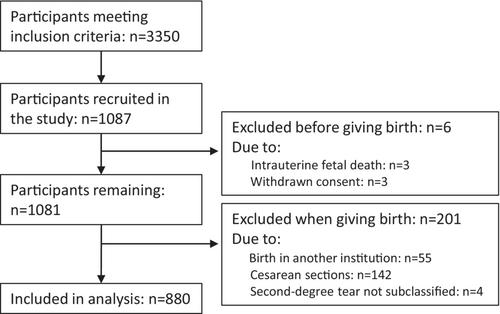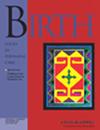The amount of tissue trauma within second-degree perineal tears varies widely. Therefore, subcategorization of second-degree tears and a better understanding of their occurrence and risk factors are needed. The aim of this study was to assess the occurrence of perineal tears when second-degree tears were subcategorized. Furthermore, we aimed to assess the association between variables related to perineal anatomy and other potential risk factors, with second-degree tear subcategories.
This prospective cohort study included 880 primiparous and multiparous women giving birth to one child vaginally. Perineal tears were categorized using the classification system recommended by the Royal College of Obstetricians and Gynaecologists. In addition, second-degree tears were subcategorized as 2A, 2B, or 2C according to the percentage of damage to the perineal body. Selected variables related to perineal anatomy were as follows: length of genital hiatus; perineal body length; and previous perineal trauma. Risk factors for second-degree tear subcategories were analyzed using a multinominal regression model.
Perineal tears occurred as follows: first-degree: 35.6% (n = 313), 2A: 16.3% (n = 143), 2B: 9.1% (n = 80), 2C: 6.6% (n = 58), and third- or fourth-degree: 1.6% (n = 14). In total, 169/880 participants underwent an episiotomy. When episiotomies were excluded, the risk for 2B, or 2C tears increased with smaller genital hiatus, larger perineal body, previous perineal trauma, primiparity, higher gestational age, instrumental vaginal delivery and fetal presentation other than occiput anterior.
The occurrence of second-degree tear subcategories was 16.3% for 2A tears, 9.1% for 2B tears, and 6.6% for 2C tears. Factors related to perineal anatomy increased the odds for experiencing a second-degree tear in a more severe subcategory.




